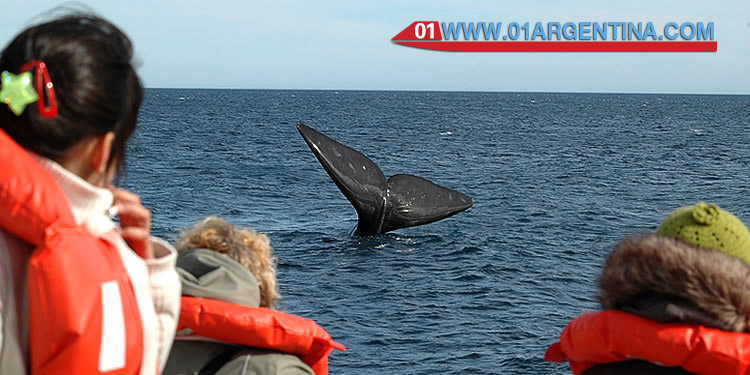 The sea is a world full of strange sounds to the daily life of man.
The sea is a world full of strange sounds to the daily life of man.
Little is known about the whale sound function but is believed to play a very important role in an environment where visibility is notably restricted, and is void in some places. It could appear to provide information on identity, position, sex and reproductive status, size of groups, presence of prey and predators.
The different sounds produced by the Southern Right Whale in Puerto Madryn are related to the composition, size, sex and type of activity they perform. Some suppose that the sound emitted by them, aims to establish communications between individuals separated by great distances and that not only communicate actively but also are able to use different sounds to communicate messages of diverse nature, not yet known in detail. It is known that the solitary specimens that are at rest emit few sounds, whereas the individuals who need to communicate emit certain calls that are answered; This situation is frequent between mother and puppy when they separate circumstantially and lose visual contact.
Within the complex field of the emission of sounds, also those that are a consequence of the interaction with the water, like blows of pectoral fins, tail and others produced by jumps are also important. These sounds have a social meaning and a structure such that they can be detected and interpreted by other animals at great distances.
BEHAVIOR OF WALES
Like the rest of the whales, the austral Franca makes two migrations a year: a food or food migration to areas rich in zooplankton near the Antarctic convergence; And reproductive migration towards more temperate and coastal waters, calm and refugee from the adverse weather conditions that the open sea presents and that would be risky for the young.
Unlike dolphins that have a social structure of close ties, whales do not form packs but rather move in solitary form. In the mating and rearing area, they are observed in small groups of copula generally smaller than 6 individuals that after the copulation are dispersed, or in mother-offspring units, a relationship that ends after weaning during the next reproductive migration of the mother .
It jumps frequently, also stays long with the tail out of the water, strikes the surface with the fins and tail causing explosions of sea foam. They are very curious, tend to appear vertically in a position known as “espionage.”
WHAT DO WE SEE WHEN WE SEE WHALES?
Whales are permanently exhibited. Unlike other whales, this species spends a lot of time on the surface showing its tail, fins and more frequently its back. However, like an iceberg, it is difficult to fully imagine the shape of a whale when we see only a small part of its body.
These two illustrations show you the parts of the body of the whale that you do not see during the sighting: tail “in sail” and loins during the swimming.
NATIONAL WHALE DAY
The 25 of September, was declared like “National Day of the Whale” by the Senate of the Nation. It is celebrated every year in Puerto Pirámides.
Although in English we call it Right Whale, the English name the Right Whale – whose literal translation is the right or right Whale – was given to be ideal to be hunted. After death, the animal floats in the water and his curiosity and calm attitude allows a approach without problems. This characteristic made it decimated for years by whaling fleets operating in the southern seas.
From the prohibition of hunting this species imposed by the International Whaling Commission the population began to recover slowly and in 1971 the presence of the Free Whales in Península Valdés had already been noticed by divers who extracted shellfish in the San José Gulf ( To the east of the Peninsula): Mariano van Gelderen, Jorge Schmid, Carlos Veloso, R. Bengoa, Norberto Fages, Picallo, Brandimarte among others.
However, its recovery today remains at risk: the lack of adequate international legislation and the sanction of the proposal to create a natural sanctuary for this species in the South Atlantic do not create the conditions for a full recovery.
The incidence of coastal developments, interaction with other species (such as seagulls that hurt their backs), transit of vessels, fishing nets or modification of marine ecosystems, keep the free whale in a situation of extreme weakness Which must be overcome. To repair a historical cruelty committed against a species that has always been friendly to humanity.








